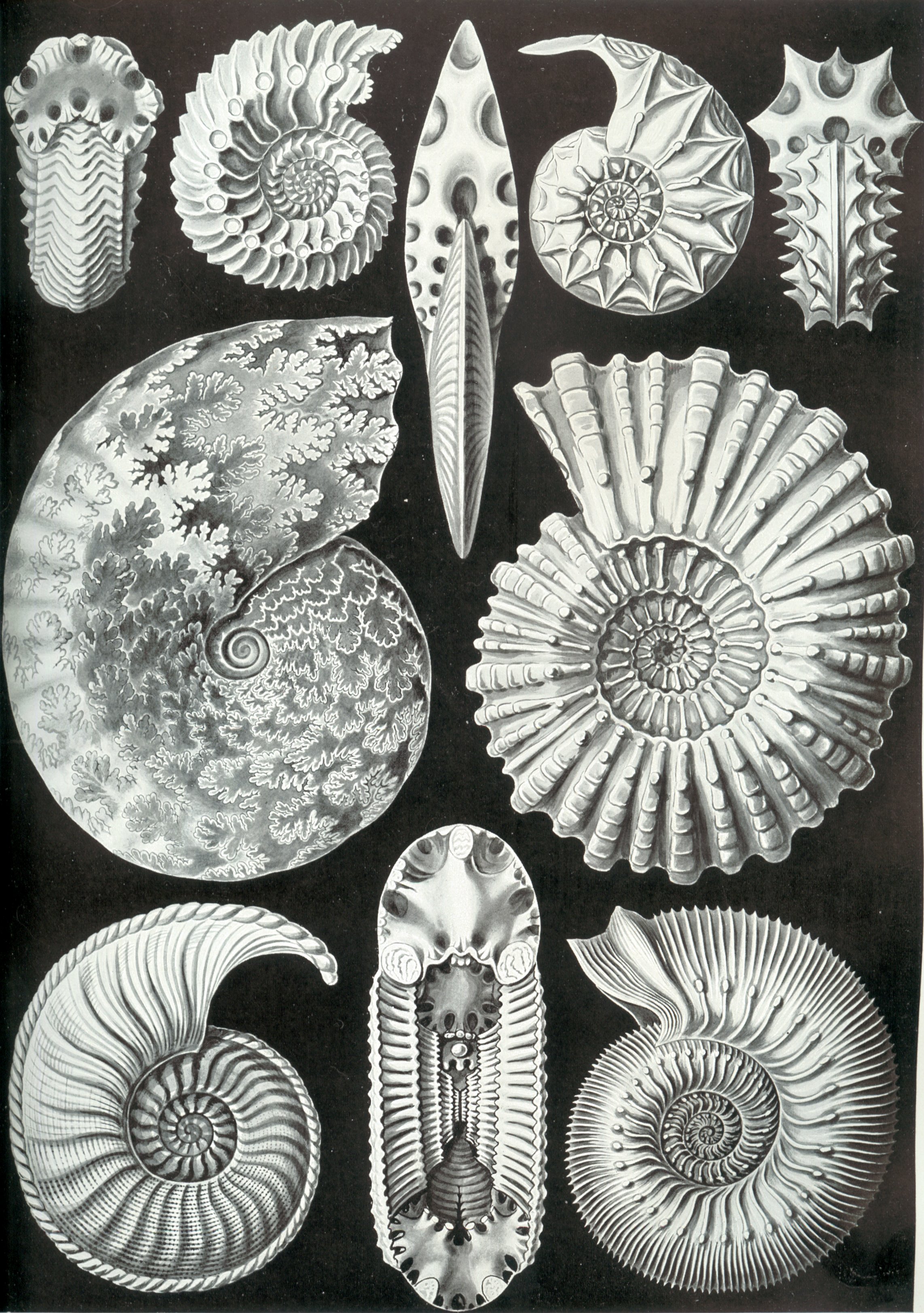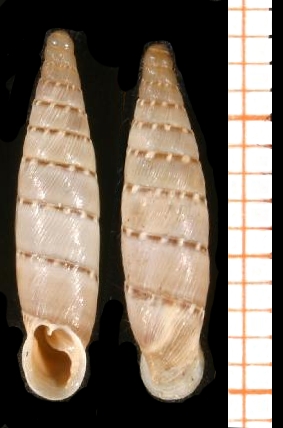suture (anatomy) on:
[Wikipedia]
[Google]
[Amazon]
In
 In the type of crurotarsal ankle, which is found in crocodilians and some other archosaurs, the astragalus is fixed to the
In the type of crurotarsal ankle, which is found in crocodilians and some other archosaurs, the astragalus is fixed to the
 In
In
 Nearly all snail shells (except for the shells of limpets, abalone, sea hares, etc.) can be visualized as a tube of increasing diameter, closed at the small end, and spirally wrapped around a central axis. For more information, see
Nearly all snail shells (except for the shells of limpets, abalone, sea hares, etc.) can be visualized as a tube of increasing diameter, closed at the small end, and spirally wrapped around a central axis. For more information, see
 A trilobite's carapace consisted of
A trilobite's carapace consisted of
anatomy
Anatomy () is the branch of morphology concerned with the study of the internal structure of organisms and their parts. Anatomy is a branch of natural science that deals with the structural organization of living things. It is an old scien ...
, a suture is a fairly rigid joint
A joint or articulation (or articular surface) is the connection made between bones, ossicles, or other hard structures in the body which link an animal's skeletal system into a functional whole.Saladin, Ken. Anatomy & Physiology. 7th ed. McGraw- ...
between two or more hard elements of an organism, with or without significant overlap of the elements.
Sutures are found in the skeletons or exoskeletons of a wide range of animals, in both invertebrate
Invertebrates are animals that neither develop nor retain a vertebral column (commonly known as a ''spine'' or ''backbone''), which evolved from the notochord. It is a paraphyletic grouping including all animals excluding the chordata, chordate s ...
s and vertebrate
Vertebrates () are animals with a vertebral column (backbone or spine), and a cranium, or skull. The vertebral column surrounds and protects the spinal cord, while the cranium protects the brain.
The vertebrates make up the subphylum Vertebra ...
s. Sutures are found in animals with hard parts from the Cambrian
The Cambrian ( ) is the first geological period of the Paleozoic Era, and the Phanerozoic Eon. The Cambrian lasted 51.95 million years from the end of the preceding Ediacaran period 538.8 Ma (million years ago) to the beginning of the Ordov ...
period to the present day. Sutures were and are formed by several different methods, and they exist between hard parts that are made from several different materials.
Vertebrate skeletons
The skeletons of vertebrate animals (fish, amphibians, reptiles, birds, and mammals) are made ofbone
A bone is a rigid organ that constitutes part of the skeleton in most vertebrate animals. Bones protect the various other organs of the body, produce red and white blood cells, store minerals, provide structure and support for the body, ...
, in which the main rigid ingredient is calcium phosphate.
Cranial sutures
The skulls of mostvertebrates
Vertebrates () are animals with a vertebral column (backbone or spine), and a cranium, or skull. The vertebral column surrounds and protects the spinal cord, while the cranium protects the brain.
The vertebrates make up the subphylum Vertebra ...
consist of sets of bony plates held together by cranial sutures
In anatomy, fibrous joints are joints connected by Fibrous connective tissue, fibrous tissue, consisting mainly of collagen. These are fixed joints where bones are united by a layer of white fibrous tissue of varying thickness. In the skull, the ...
. These sutures are held together mainly by Sharpey's fibers which grow from each bone into the adjoining one.
Sutures in the ankles of land vertebrates
 In the type of crurotarsal ankle, which is found in crocodilians and some other archosaurs, the astragalus is fixed to the
In the type of crurotarsal ankle, which is found in crocodilians and some other archosaurs, the astragalus is fixed to the tibia
The tibia (; : tibiae or tibias), also known as the shinbone or shankbone, is the larger, stronger, and anterior (frontal) of the two Leg bones, bones in the leg below the knee in vertebrates (the other being the fibula, behind and to the outsi ...
by a suture, and the joint bends around a peg on the astragalus, which fits into a socket in the calcaneum.
Invertebrate exoskeletons
In molluscs
The shells of mostmollusc
Mollusca is a phylum of protostome, protostomic invertebrate animals, whose members are known as molluscs or mollusks (). Around 76,000 extant taxon, extant species of molluscs are recognized, making it the second-largest animal phylum ...
s are made of calcium carbonate
Calcium carbonate is a chemical compound with the chemical formula . It is a common substance found in Rock (geology), rocks as the minerals calcite and aragonite, most notably in chalk and limestone, eggshells, gastropod shells, shellfish skel ...
(the main constituent of limestone
Limestone is a type of carbonate rock, carbonate sedimentary rock which is the main source of the material Lime (material), lime. It is composed mostly of the minerals calcite and aragonite, which are different Polymorphism (materials science) ...
and chalk), and of conchiolin, a protein. For more information, see Mollusc shell.
Sutures in the shells of cephalopods
 In
In cephalopod
A cephalopod is any member of the molluscan Taxonomic rank, class Cephalopoda (Greek language, Greek plural , ; "head-feet") such as a squid, octopus, cuttlefish, or nautilus. These exclusively marine animals are characterized by bilateral symm ...
mollusks, which have external shells (e.g. ''Nautilus
A nautilus (; ) is any of the various species within the cephalopod family Nautilidae. This is the sole extant family of the superfamily Nautilaceae and the suborder Nautilina.
It comprises nine living species in two genera, the type genus, ty ...
'', ammonites), the shell is divided into compartments by septa (partitions).
The septa are joined to the external shell by sutures formed by repeated invagination (they interlock like pieces of a jigsaw puzzle). The sutures are visible from the outside and often form complex and elaborate patterns.
The suture in the shells of
gastropod
Gastropods (), commonly known as slugs and snails, belong to a large Taxonomy (biology), taxonomic class of invertebrates within the phylum Mollusca called Gastropoda ().
This class comprises snails and slugs from saltwater, freshwater, and fro ...
s
 Nearly all snail shells (except for the shells of limpets, abalone, sea hares, etc.) can be visualized as a tube of increasing diameter, closed at the small end, and spirally wrapped around a central axis. For more information, see
Nearly all snail shells (except for the shells of limpets, abalone, sea hares, etc.) can be visualized as a tube of increasing diameter, closed at the small end, and spirally wrapped around a central axis. For more information, see Gastropod shell
The gastropod shell is part of the body of many gastropods, including snails, a kind of mollusc. The shell is an exoskeleton, which protects from predators, mechanical damage, and dehydration, but also serves for muscle attachment and calcium ...
.
Each complete rotation of this spirally-arranged tube is called a whorl. The whorls of a snail shell usually overlap one another, forming a spire. Where the whorls overlap, there is usually a clear (if narrow) indentation. This indentation forms a visible line, which is continuous and reaches from the apex of the shell to the aperture; this line is the suture.
Details of the suture are often useful in discriminating one species from another, for example, sometimes the suture is channeled.
The suture also provides a sort of geographic marker from which one can refer to the positioning of patterning or sculpture
Sculpture is the branch of the visual arts that operates in three dimensions. Sculpture is the three-dimensional art work which is physically presented in the dimensions of height, width and depth. It is one of the plastic arts. Durable sc ...
, where that is relevant: for example some species have a darker or lighter subsutural band on the shell.
When an angulation of the whorls occurs, the space between it and the suture above it (i.e. the abaxial edge of the sutural ramp) constitutes the area known as the "shoulder" of the shell. The shoulder angle may be simple or keeled, and may sometimes have nodes or spines
In arthropods
Sutures in the carapaces of trilobites
calcite
Calcite is a Carbonate minerals, carbonate mineral and the most stable Polymorphism (materials science), polymorph of calcium carbonate (CaCO3). It is a very common mineral, particularly as a component of limestone. Calcite defines hardness 3 on ...
and calcium phosphate deposited on a lattice (framework) of chitin
Chitin (carbon, C8hydrogen, H13oxygen, O5nitrogen, N)n ( ) is a long-chain polymer of N-Acetylglucosamine, ''N''-acetylglucosamine, an amide derivative of glucose. Chitin is the second most abundant polysaccharide in nature (behind only cell ...
(a polysaccharide
Polysaccharides (), or polycarbohydrates, are the most abundant carbohydrates found in food. They are long-chain polymeric carbohydrates composed of monosaccharide units bound together by glycosidic linkages. This carbohydrate can react with wat ...
).
The trilobite body is divided into three major sections: a cephalon (head section) with eyes, mouthparts and sensory organs such as antennae; a thorax of multiple segments which are similar to each other; and a pygidium, or tail section.
In many species, the cephalon had sutures running from back to front round the outside edges of the eyes. These sutures divided the cephalon into three pieces.
The sutures in trilobites' cephalons were unusual because it seems their main function was to create ''weaknesses'', which made it easy for this part of the carapace ("armor") to split when the animal needed to molt.
References
{{Authority control Skeletal system Animal anatomy Mollusc anatomy